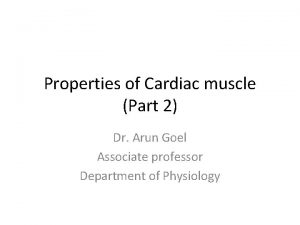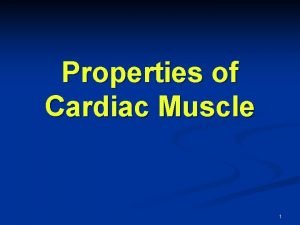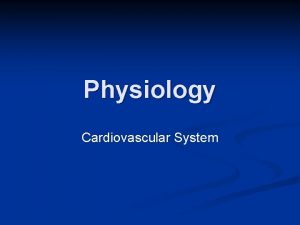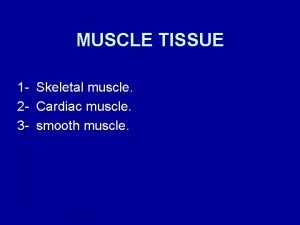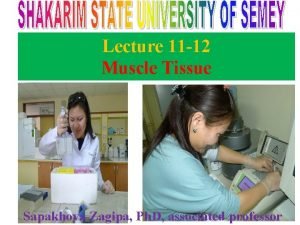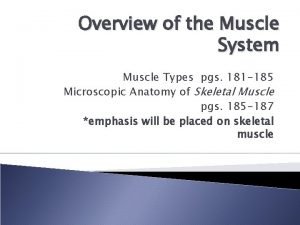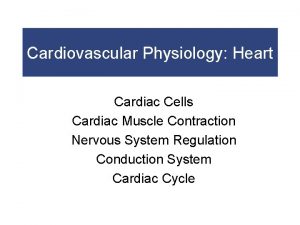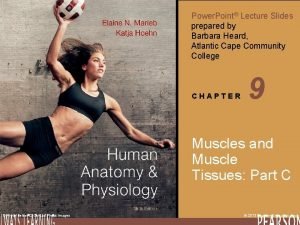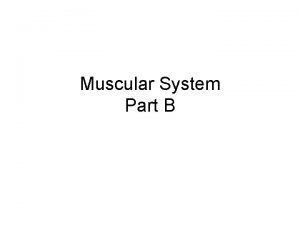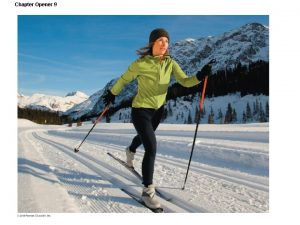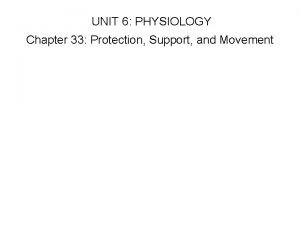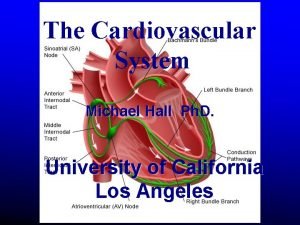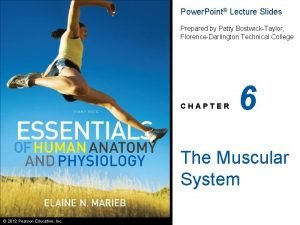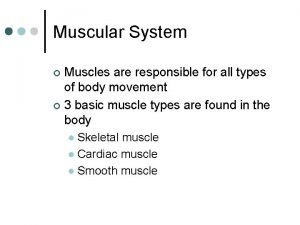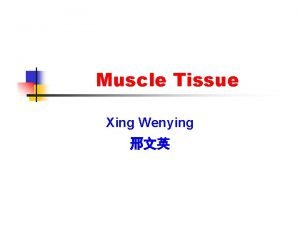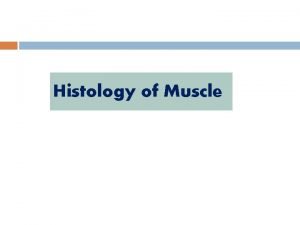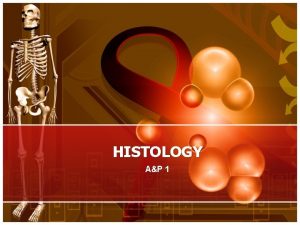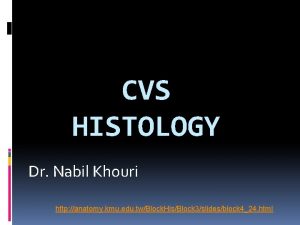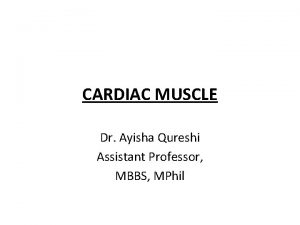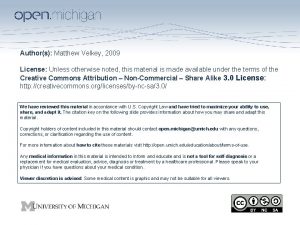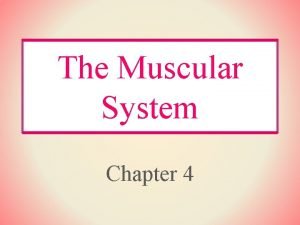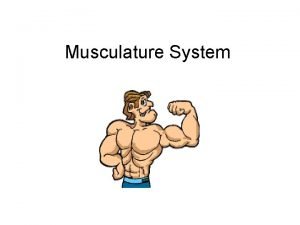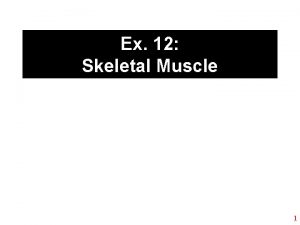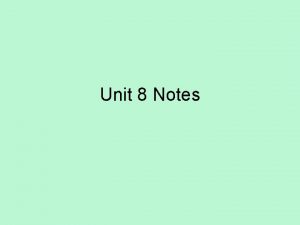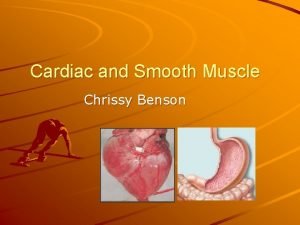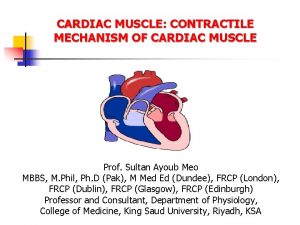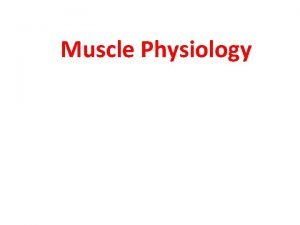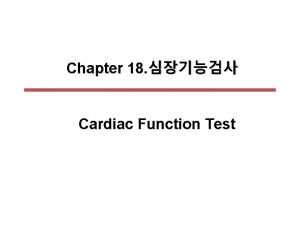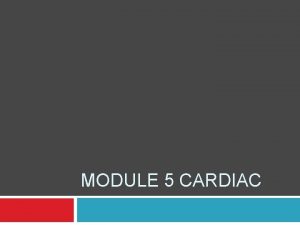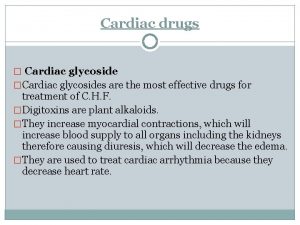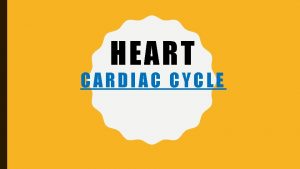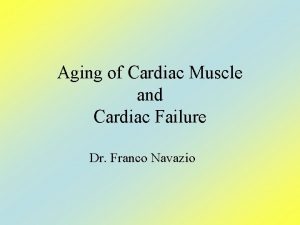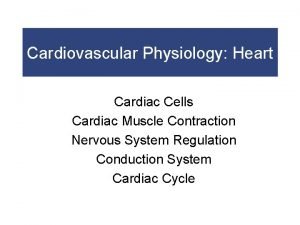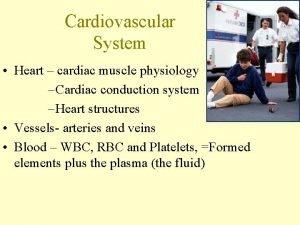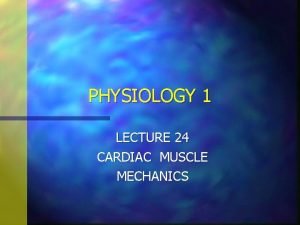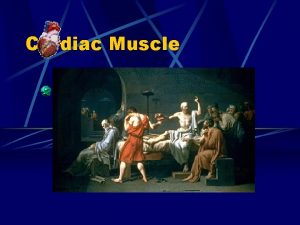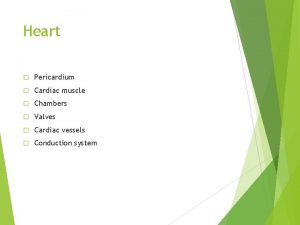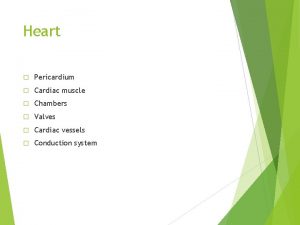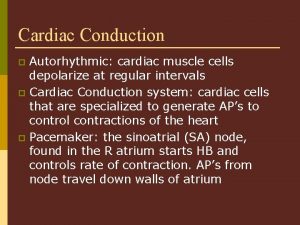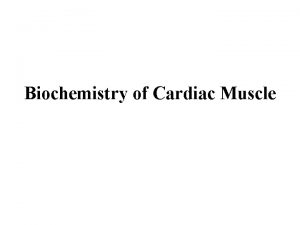Properties of Cardiac muscle Part 1 Dr Arun























- Slides: 23

Properties of Cardiac muscle (Part 1) Dr. Arun Goel Associate professor Department of Physiology

Properties of cardiac muscle

Properties of the cardiac muscle: I. Excitability: The ability to respond to a stimulus of adequate strength and duration (i. e. threshold or more) by generating a propagated action potential II. Conductivity: The ability to conduct excitation through the cardiac tissue III. Contractility: The ability to contract in response to stimulation IV. Auto-Rhythmicity: The ability to initiate a heart beat continuously and regularly without external stimulation

Refractory Period Excitability changes during the action potential

Phases of action potential in ventricles/SA node) 1 Phase 0 = depolarization Phase 1 = early repolarization Phase 2 = Plateau potential Phase 3 = repolarization Phase 4 = resting state of polarization 2 3 0 SA node 4 ~ 200 msec ARP 0 RRP 4 ARP = absolute refractory period RRP = relative refractory period 3

Relative Permeabilities During Action Potential

Pacemaker Potential

Channels responsible for pacemaker potential

Pacemaker of the heart: SA- node • Small, ellipsoid strip about 3 mm wide, 15 mm long, and 1 mm thick • Located in the superior postero-lateral wall of the right atrium immediately below and slightly lateral to the opening of the superior venacava

Pacemaker of the heart: SA- node • Contains the P- cells, which are actual pacemaker cells • Unstable RMP and spontaneous depolarization • Has the fastest rhythm: 90 impulses/min

Rate of generation of AP at different sites of the heart RATE (impulses/min) SITE 100 SA node 40 - 60 AV node 20 - 35 AV bundle, bundle branches, & Purkinje fibres ANS and hormones modify the timing and strength of each heart beat but do not establish the fundamental rhythm vagal tone controls SA- node to become 70 impulses/min

Action potential in different regions of the heart

Effect of ANS

Conductivity: • Inter-nodal Pathway – Anterior internodal bundle of Bachman – Middle internodal bundle of Wenkebach – Posterior internodal bundle of Thoral

Conduction velocities in different regions of heart Region of heart Atria Inter-nodal fibers AV node Bundle of His Purkinje fibers Ventricles Speed of spread 0. 5 m/sec 1 m/sec 0. 05 m/sec 2 m/sec 4 m/sec 1 m/sec Due to differences in gap junction properties

Time of impulse arrival at different regions of the heart Regions Time SA node 0. 00 sec AV node 0. 03 sec Bundle of His 0. 12 sec Ventricular septum 0. 16 sec Endocardium 0. 17 - 0. 19 sec Epicardium 0. 21 – 0. 22 sec


Exercises

What is the normal total delay of the cardiac impulse in the A-V node and the A-V bundle system?

Conduction velocity is least in …………and maximum in ……….

Channels involved in prepotential are ………….

Why cardiac muscle can not be tetanized ?

THANK YOU
 Properties of cardiac muscle
Properties of cardiac muscle Spread of cardiac excitation
Spread of cardiac excitation Properties of cardiac muscle
Properties of cardiac muscle T tubules
T tubules Properties of heart muscle
Properties of heart muscle Sarcoplasmic
Sarcoplasmic Cardiac skeletal and smooth muscle comparison
Cardiac skeletal and smooth muscle comparison Conduction
Conduction Comparison of skeletal cardiac and smooth muscle
Comparison of skeletal cardiac and smooth muscle Cardiac muscle tissue labeled
Cardiac muscle tissue labeled Comparison of skeletal cardiac and smooth muscle
Comparison of skeletal cardiac and smooth muscle Cardiac muscle mitochondria
Cardiac muscle mitochondria Cardiac muscle
Cardiac muscle Characteristics of skeletal smooth and cardiac muscle
Characteristics of skeletal smooth and cardiac muscle Biceps brachii and biceps femoris
Biceps brachii and biceps femoris T tubules
T tubules Characteristics of skeletal smooth and cardiac muscle
Characteristics of skeletal smooth and cardiac muscle Name the tissue type
Name the tissue type Large elastic artery
Large elastic artery Cardiac muscle
Cardiac muscle Skeletal muscle longitudinal section labeled
Skeletal muscle longitudinal section labeled Cardiac muscle tissue
Cardiac muscle tissue Cardiac muscle under microscope
Cardiac muscle under microscope Which muscle
Which muscle
